When looking for a bird to watch, there’s no better choice than the coal tit. These tiny birds are regulars at bird feeders and tables. They’re also well-known for their acrobatic antics and voracious appetites for black sunflower seeds and mealworms.
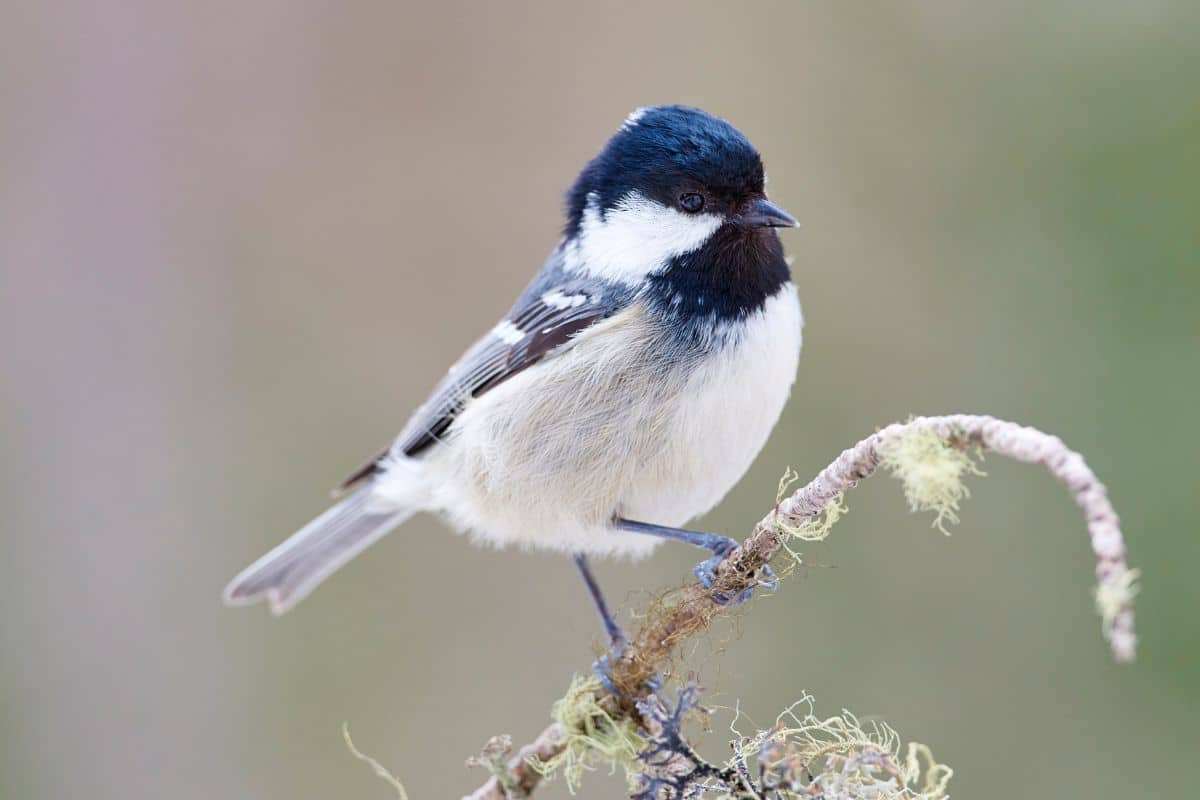
However, if you have ever wondered about their nesting habits, this guide will provide the answers.
Contents
Quick Facts
| Classification | Measurements |
| Scientific name: Periparus ater | Length: 11.5 cm |
| Other names: Cole tit | Wingspan: 17-21 cm |
| Family: Tits, Paridae | Weight: 8-10 g |
| Conservation status: Green |
| Average Lifespan: | About two years |
| When to See: | Between June and December |
| Where to See: | Primarily seen in woodlands. They prefer coniferous trees. They may be spotted in public parks or home gardens. |
What is a Coal Tit?
The coal tit is a small, gray bird whose buff body and gray head can easily identify. It has buff breasts and a belly, contrasting with its black cap and wings. The coal tit also has white cheeks, chestnut eyes, and a black bill.
As well as these distinctive features, it has a white patch on its neck and another on the back of its head. These patches help to identify it from other similar species.
During the year’s colder months, flocking birds, such as coal tits, gather together with other species of tits. Like other tits, they are highly agile and active.
Where Do Coal Tits Nest?
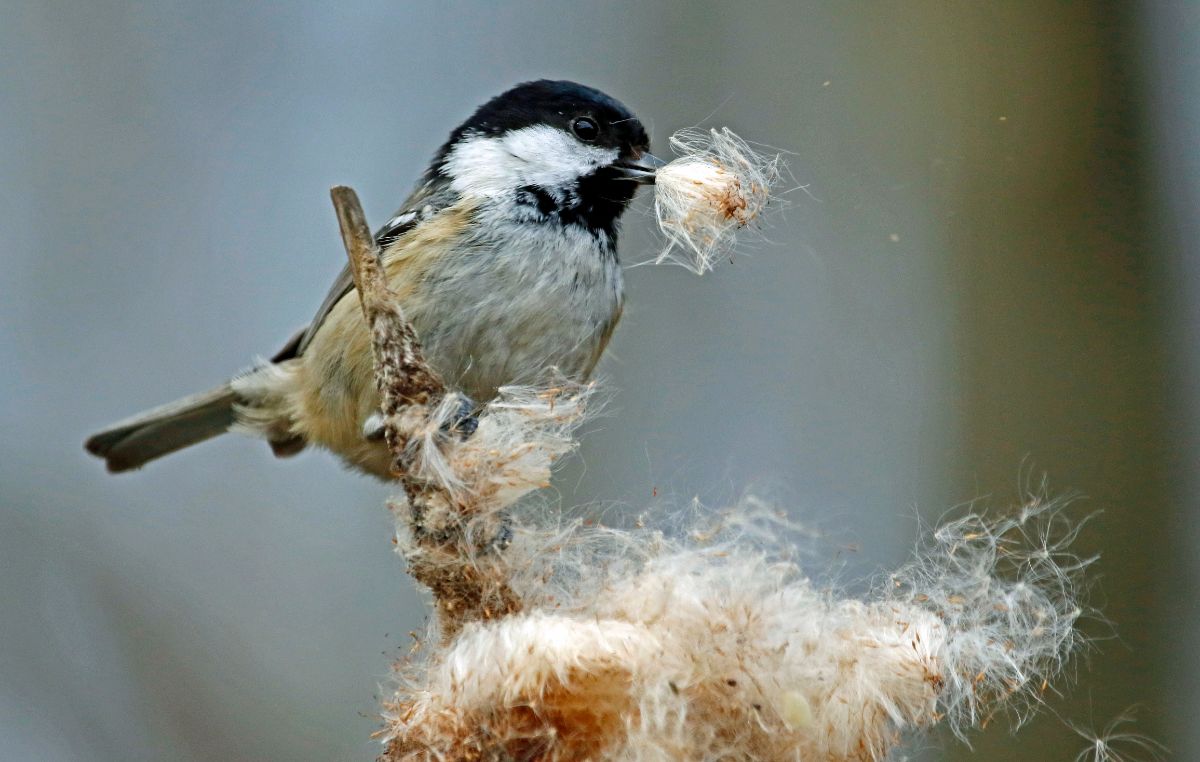
Coal tits are small birds that are part of the tit family, which includes birds such as blue tits, great tits, long-tailed tits, marsh tits, and crested tits. These birds have a lifespan of about 2 years and can be found throughout Europe, Asia, and North America.
Coal tits favor coniferous woodland, which means that they are more likely to nest in areas with conifers than in those with deciduous trees. They nest in tree cavities, but they also use bird boxes and nest boxes put up by people.
Nest boxes, squirrel dreys, and even abandoned magpie nests are fair game. They also use abandoned mouse and rabbit burrows and holes in trees and walls as breeding sites. Plus, they will use nesting boxes even if the entrance hole is only a few millimeters across, and there’s even evidence to suggest they may favor boxes with a slim vertical slit.
What Do Coal Tit’s Nests Look Like?
The nests of coal tits are cup-shaped and relatively small. They are constructed out of moss, lichen, hair, and feathers. It is common practice to place them in tree cavities or holes in walls, but they have also been discovered in beams, rafters, between boulders, and more.
The nest of a coal tit is typically constructed out of moss and grasses, but it may also be lined with the hair, wool, or feathers of other types of animals.
The female coal tit builds the nest alone. She will then lay her eggs, which she will incubate for approximately three weeks alone. After that, she will care for her young until they are ready to fly.
When Do Coal Tits Nest?
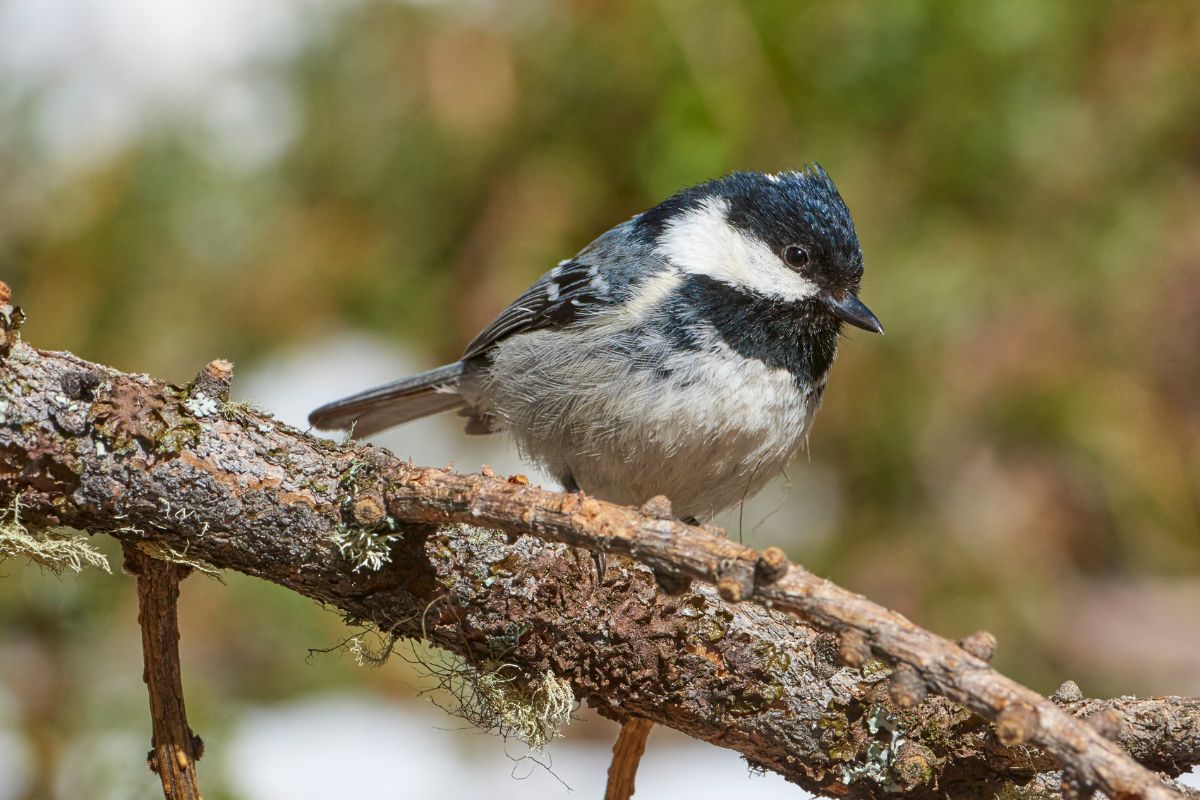
Coal tits have a short nesting season, from the end of March to the beginning of July. During this period, you can find coal tits constructing their nests. There is a 16-day gestation period after an egg is laid. The young birds can take flight after about 20 days.
You might be able to witness coal tits engage in courtship behavior before the start of the nesting season. They are known for their loud song and courtship displays. During the breeding season, males sit high in a tree and sing to mark their territory.
They either strut up and down with raised tails, drooping wings, and fluffed feathers or bend forward with a fanned tail and fluttering wings. In addition, they will perform long periods of wing-shivering, and wheezing calls are used during pair formation.
The display will include a male’s slow gliding flight with his wings and tail fully spread, passing close to the partner. And then there’s the prolonged courtship feeding that comes afterward.
The coal tit is a monogamous species of bird. It mates for life, and the two birds usually stay together year-round.
Will Coal Tits Use a Nesting Box?
Coal tits are cavity nesters, meaning they prefer to use a nest box. However, they will also use natural cavities and blue tit nest boxes occasionally.
A box height of 1 meter or less is preferable to coal tits. Ideally, place your box near coniferous trees and at least 0.5 meters away from any other installed nest boxes.
Ideally, place your box near coniferous trees, as this is the preferred habitat for coal tits.
What Do Coal Tit Eggs Look Like?
Coal tit eggs are small, and they’re speckled with reddish-brown dots. The eggs are usually found hidden in a nest built by the parents in a tree trunk or hollow log.
At first glance, the eggs look like they have gray dots. But when you look at them up close, you can see that those dots are tiny brown specks, almost like dirt or pollen.
How Many Eggs Do Coal Tits Lay?
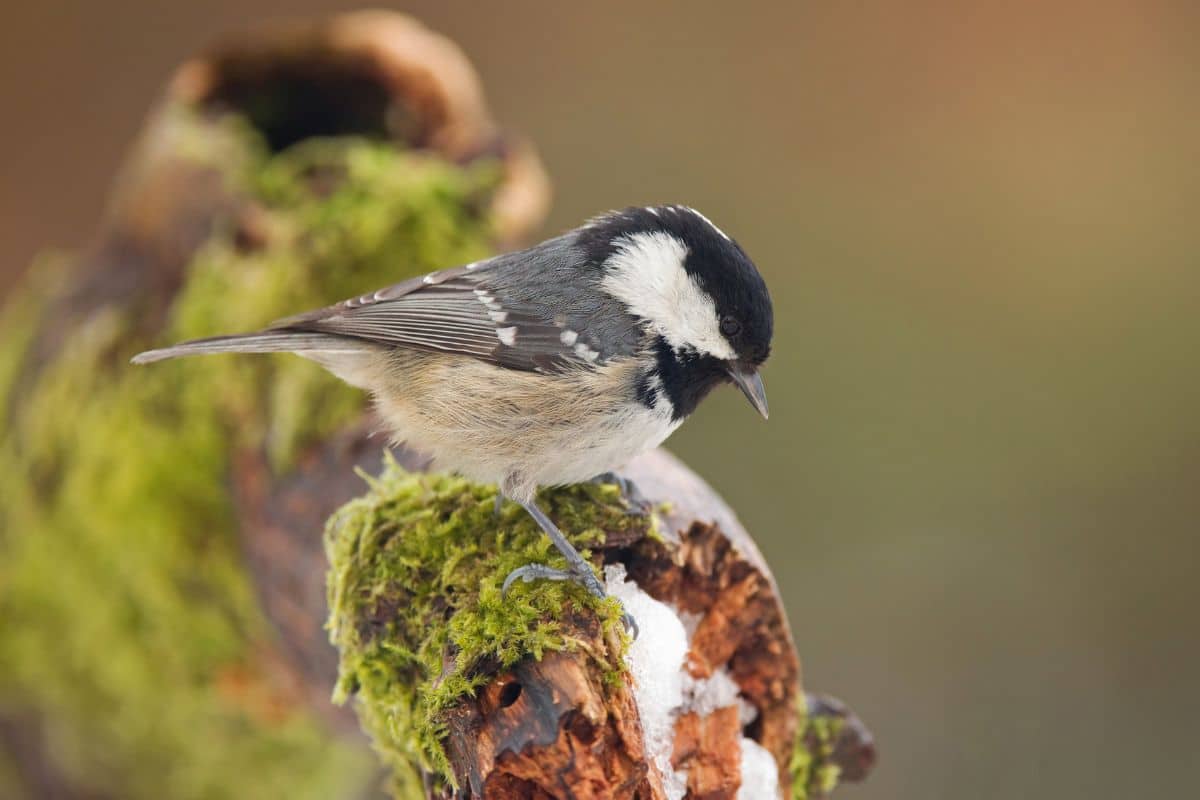
The coal tit typically lays two broods per year. However, the second clutch is often smaller. They lay between 6 and 10 eggs per clutch. The female will lay all the eggs in one day, usually in April or May. She will then incubate them for about 16 days before they hatch.
During this period, both parents need to provide food for their young. Males will assist in the food search, while females will protect their nests from predators who may try to steal eggs during incubation.
When Do Baby Coal Tits Leave the Nest?
The young coal tits are only in their nests for 16 days before they leave. After that, they spend another two weeks with their parents, who continue to feed them. They are taught how to find food themselves by following their parents around when they go out foraging for food on their own.
Do Coal Tits Nest in the Same Place Every Year?
Coal tits typically nest in the same place yearly, but they sometimes change locations if their habitat is disturbed or destroyed. They will also migrate if severe weather and food availability are low.
This means that coal tit nests are somewhat predictable but not completely so. The exact location of each nest will vary from year to year.
What Kind of Food Do Coal Tits Eat?
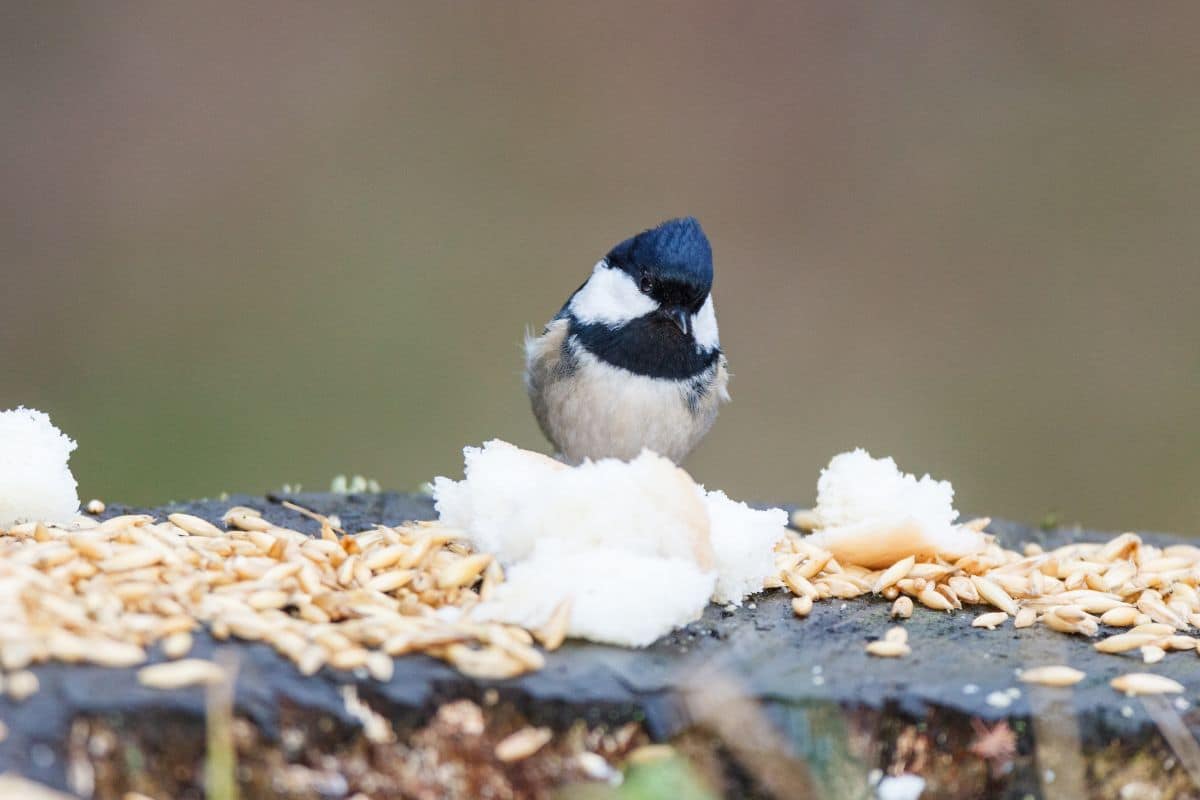
Coal tits are known for their voracious appetite for insects, spiders, and other small creatures they can find. They also eat seeds from conifers, particularly the outer branches, during the winter. Coal tits are not picky eaters and will consume a wide variety of seeds, sap, insects, and spiders.
During the day, coal tits can be seen foraging for food. They frequently visit gardens in search of the various scraps of food that are frequently left out for them, particularly sunflower seeds.
In addition, only the coal tit has mastered the art of larder-building among its kin. A single bird may visit a feeder multiple times per day, but it may only eat a small portion of the food they find there. They habitually store their eats in a secret stash for later consumption.
Also, the birds’ beaks are too small to carry more than a single seed. So they waste no time dispersing their stash. Then, the coal tits will move the items to where they are supposed to be stored.
